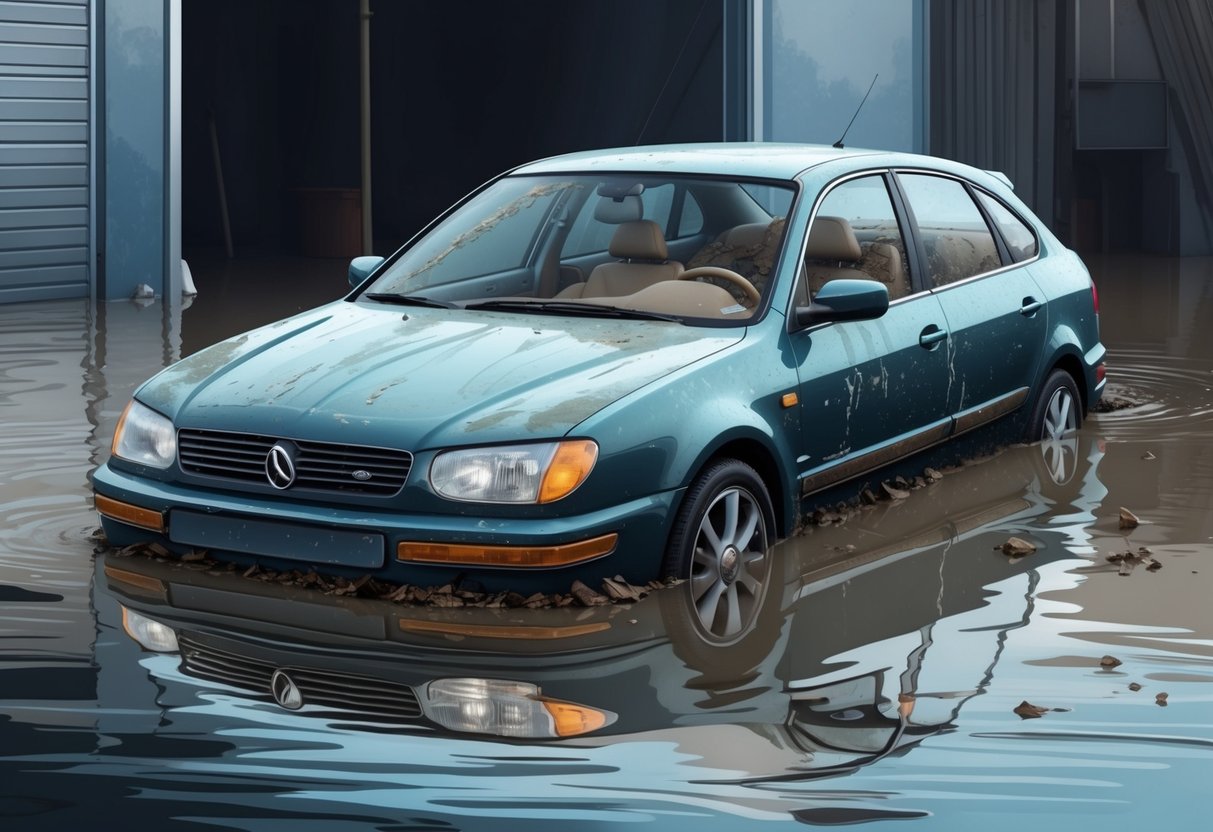
National Motor Vehicle Title Information System
The National Motor Vehicle Title Information System (NMVTIS) is a government-backed database that tracks key vehicle history information nationwide. It pulls data from state motor vehicle agencies, insurance carriers, and salvage yards.
Buyers can search NMVTIS using the vehicle’s VIN to identify whether it was ever issued a salvage or flood title or reported as a total loss. Some states require all title transfers, including flood-title assignments, to be entered into NMVTIS.
Reviewing a NMVTIS report should be a part of any thorough flood-damage check.
Checking with the National Insurance Crime Bureau
The National Insurance Crime Bureau (NICB) offers a free service called VINCheck. This database allows users to run a basic search with the vehicle’s VIN to see if an insurance company has ever declared the car as salvage, stolen, or a total loss—categories that often include flood-damaged vehicles.
VINCheck doesn’t show ownership history or minor incidents but highlights high-risk flags for cars that might have been compromised by severe water exposure. Checking the NICB’s VINCheck system is a quick step that helps buyers confirm whether a car has been involved in any large insurance claims linked to flooding.
Assessing the Title and Documentation

Examining a vehicle’s title history and supporting paperwork can be one of the most effective ways to avoid accidentally buying a flood-damaged car. These records may reveal red flags that visual inspections can easily miss.
Understanding Salvage and Flood Titles
A car that has been deemed a total loss due to water damage often receives a salvage title or a flood title. These titles serve as legal notifications, alerting prospective buyers about past damage.
A salvage title denotes that the vehicle was considered too damaged to repair cost-effectively, typically after an insurance claim. Meanwhile, a flood title specifically identifies flood or water-related damage.
Buyers should always ask for and carefully review the vehicle’s title. In some states, sellers are required to disclose if a car sustained flood damage, so a clear flood title is vital.
Checking the title status through a reputable database or car history service before purchase is strongly advised. Some online tools allow a flooded car VIN check, helping buyers spot flood-damaged vehicles before committing.
Spotting Title Washing
Title washing is the illegal practice of moving a vehicle between states to erase designations like salvage or flood from its record. This tactic can allow a damaged vehicle to receive a clean title despite its problematic history.
Warning signs of title washing include frequent transfers of ownership between different states or title brands that change during such moves. For example, a car with a flood title in one state could appear as having a clean title in another if records are not synchronized between DMVs.
To protect against title washing, buyers should obtain a comprehensive vehicle history report and cross-reference information with the National Motor Vehicle Title Information System (NMVTIS). Comparing registration dates, previous owners, and state locations can reveal inconsistencies.
Carefully inspect paperwork that suggests multistate transfers in a short period.
Red Flags in Paperwork
Scrutinize all documentation for inconsistencies, missing information, or suspicious alterations. Look for mismatched VIN numbers, unusual gaps in ownership, corrections using white-out, or different handwriting styles within a single document.
Unexplained lapses in service records, especially during times and locations prone to flooding, should raise suspicion. Receipts for recent repairs or cleaning—like carpet replacement or new electronics—right after a natural disaster could also indicate prior water intrusion.
If a vehicle history report lists multiple prior titles or indicates rebranding events such as salvage or flood, be cautious. Key records to request include:
- Bill of sale
- State-issued title documents
- Repair invoices and insurance paperwork
Always cross-reference provided paperwork against official databases for added protection.
Common Odors and Textural Cues

Noticing certain smells and textures inside a car can reveal previous flood damage. Water exposure often leaves behind lingering odors and changes in the interior’s feel or appearance that are difficult to hide.
Recognizing Musty and Moldy Odors
A dominant musty odor inside a vehicle is a strong indicator of water exposure and possible flood damage. This persistent scent can result from the growth of mold and mildew in areas like carpets, upholstery, and air vents.
Even after thorough cleaning attempts, these odors often linger and can be especially noticeable on warm or rainy days. If a vehicle smells overly sanitized or contains intense air fresheners, it may be an attempt to mask mildew or mold smells.
Checking for a mildew-like scent right after opening doors or windows is important. A consistent musty smell, especially one that doesn’t dissipate with ventilation, should prompt closer inspection for flood-related issues.
Learn more about these odor cues at Consumer Reports and The Zebra.
Unusual Vehicle Textures and Stains
Flood damage can cause unusual textures and stains on interior surfaces. Carpets and seat fabric may feel stiff, wrinkled, or rough in some places.
Touching the floor mats, under the seats, or along door panels may reveal areas that are crispy or uneven. Sodden carpeting can sometimes dry with a crunchy residue or caked-on dirt.
Stains are another key cue. Look for water lines, discoloration, or mismatched materials such as brand-new carpets in an otherwise older vehicle.
Check the padding beneath carpets and in hard-to-reach areas like the trunk or spare tire well for unexpected stains, mud, or residue. These textural irregularities often persist even after cosmetic cleaning, offering clear evidence of previous water intrusion.
For additional guidance, see Used Cars and Auto HowStuffWorks.